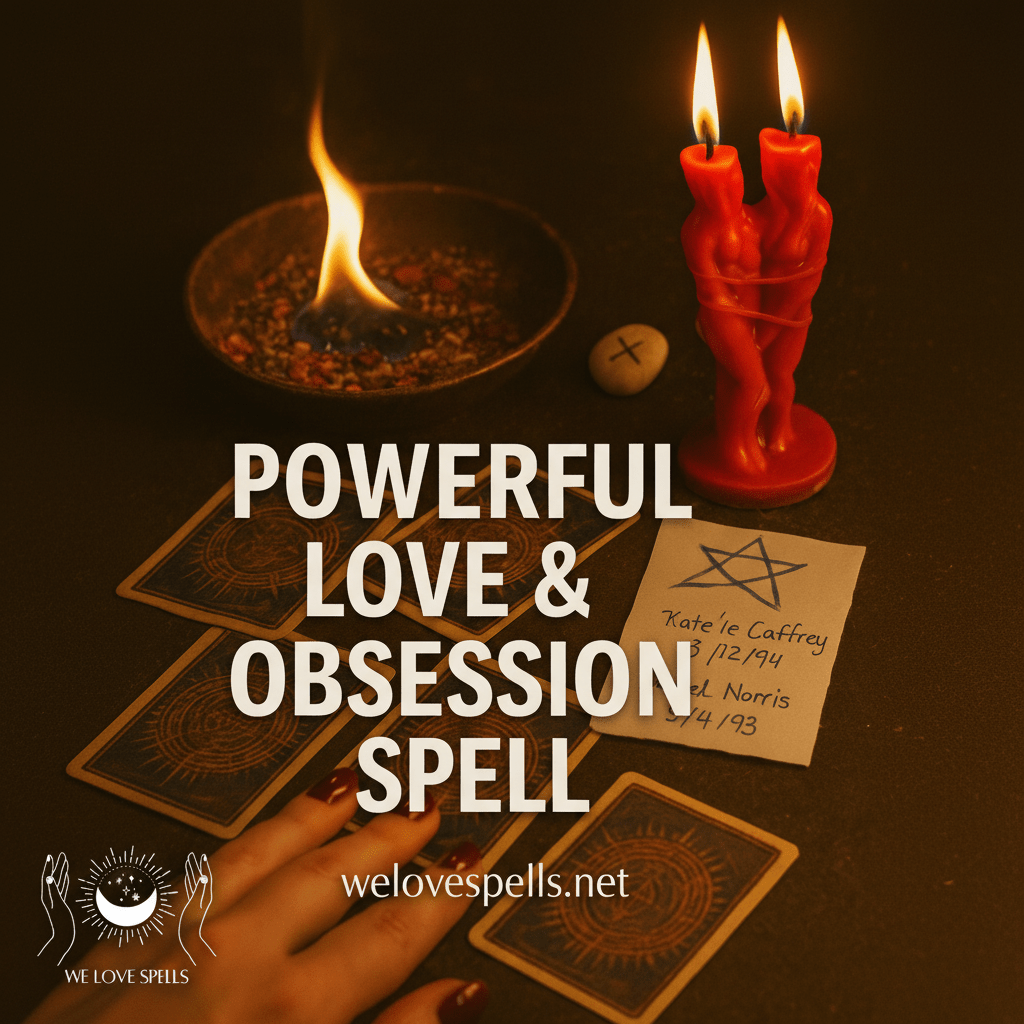The Ancient Uses and Magickal Properties of Peppermint
- Love spells focus intention, timing, and symbolic ingredients to attract connection, passion, and reconciliation—peppermint is a classic amplifier for clarity, attraction, and purification.
- Peppermint’s cooling energy supports romance rituals, dream work, and psychic openness while also offering real-world benefits for digestion, headaches, and focus.
- Use peppermint as tea, oil (diluted), sachets, or candle dressings to cleanse energy and charge love intentions; pair with rose, cinnamon, or basil for enhanced results.
- Follow simple ritual steps: cleanse, set intention, anoint or brew, visualize the desired outcome, then ground and close the work.
- For guidance and consistent results, work with verified spell casters and proven rituals from trusted sources.
Peppermint is a timeless herb revered for both healing and magick. Across cultures, its cool, bright aroma symbolizes purification, mental clarity, and romance—making it a favorite for rituals of love, protection, and psychic vision.
In daily life, peppermint shows up in teas, toothpastes, and natural remedies. Spiritually, it bridges the worlds of wellness and intention—clearing stagnant energy while awakening the senses to love and possibility.
Peppermint can be enjoyed as tea, tincture, capsules, or diluted essential oil for topical use. If you have health conditions or take medications, consult your practitioner first.
Want fast, verified help with matters of the heart? Buy love spells online from verified spell casters or shop real love spells that work today.

Historical Roots: Peppermint in Healing and Love Magick
Peppermint in Traditional Therapeutics
Peppermint’s use dates back to ancient Egypt, Greece, and Rome. Healers brewed the leaves for digestion, headaches, and respiratory ease. Crushed mint was also applied to skin for cooling relief—practices echoed by modern herbalists.
Magickal Rituals and Spiritual Uses
Beyond medicine, peppermint has long been a ritual ally. It’s used to purify spaces, protect energy, and enliven the senses for psychic work and love attraction. Burn dried mint, diffuse the oil, or add it to ritual baths to cleanse and uplift your aura and home.
Peppermint’s Magickal Properties and Healing Benefits
Cooling Relief and Clear Breathing
Menthol is peppermint’s powerhouse compound. It offers analgesic and anti-inflammatory support, eases tension headaches when used topically, and opens the airways when inhaled—supporting colds and seasonal congestion.
Purification and Spiritual Clarity
Peppermint’s crisp scent is synonymous with freshness. Use it in floor washes, room sprays, or diffusers to dissolve heavy energy and invite focus, optimism, and elevated vibration.
Opening Psychic Channels
Drink peppermint tea before meditation to sharpen intuition and mental clarity. Place fresh leaves on your altar to energize divination and dream recall.
Peppermint for Sleep and Dreamwork
A gentle peppermint infusion before bed can calm the mind and help you remember dreams. Tuck a small sachet under your pillow to encourage soothing, insightful rest.
For dream-centered spellwork, explore the Dream of Me Spell.
Love and Passion
In romance rituals, peppermint is believed to kindle attraction and heighten sensuality. Dress red or pink candles with diluted peppermint oil or add dried leaves to a love charm to intensify chemistry and connection.
Want a passion boost? See the Lust For Me Love Spell.
Peppermint in Greek Mythology: Love, Death, and Renewal
Hades and the Scent of Transformation
In Greek lore, peppermint is sacred to Hades, god of the underworld. It symbolizes transformation and remembrance—sometimes used in funerary rites to honor the passage from life to rebirth.
Zeus and the Nymph Mentha
Another myth ties peppermint to Zeus and the nymph Mentha, transformed into the plant and immortalized in fragrance. The tale cements peppermint’s link to enduring love, desire, and heartfelt devotion.
Modern Everyday Uses of Peppermint
Food and Drink
Peppermint’s bright flavor lives in candies, chocolates, and festive drinks. As tea, it makes a soothing after-meal digestif.
Oral Care and Freshness
Thanks to gentle antibacterial action, peppermint stars in toothpaste and gum—freshening breath and supporting oral hygiene.
Calm and Focus
Sip, diffuse, or apply (diluted) to reduce stress and sharpen concentration. Many find the aroma clears mental fog and supports productivity.

Therapeutic Benefits: How Peppermint Helps the Body
Digestive Comfort and IBS Support
Peppermint relaxes gastrointestinal muscles, easing cramps, gas, and bloating. Enteric-coated peppermint oil capsules are often used to support those with IBS.
Tension Headaches and Migraines
Diluted peppermint oil applied to temples and neck can deliver cooling comfort, promote circulation, and release muscle tightness.
Nausea, Skin, and Soothing Care
Peppermint tea helps settle the stomach. Topically (always diluted), it may calm minor irritation or itch and soothe tired muscles.
Immune Support and Cold Season
With antibacterial and antiviral compounds, peppermint supports the immune system. Inhale steam with a few drops of peppermint oil or sip warm tea for respiratory ease.
How to Use Peppermint
- Tea: Fresh or dried leaves.
- Capsules/Tinctures: Targeted internal support (follow product guidance).
- Essential Oil: Diffuse or apply topically only when diluted with a carrier oil.
- Topicals: Balms, creams, and cosmetics for cooling refreshment.
Patch-test essential oil blends first. Seek medical advice if pregnant, breastfeeding, or managing GERD or gallbladder concerns.
The Peppermint Plant: Botanical Magic
What Peppermint Looks Like
Peppermint (Mentha × piperita) is a perennial herb reaching 2–3 feet tall. It has square stems, deep green serrated leaves, and spikes of tiny purple flowers that attract pollinators—bringing life and energy to your garden.
Aroma and Essential Oils
Dark, aromatic leaves hold the highest menthol content. This concentrated oil delivers peppermint’s signature cooling flavor and makes it ideal for love sachets, cleansing blends, and ritual anointing.

Practical Ways to Use Peppermint
Tea for Calm and Clarity
Steep 1–2 teaspoons of dried leaf (or a few fresh sprigs) in hot water for 5–7 minutes. Enjoy plain or with honey—hot or iced—for soothing digestion and a focused mind.
Tinctures and Capsules
Tinctures offer concentrated benefits in small doses, while enteric-coated capsules can provide gentle, targeted digestive support.
Topicals and Beauty
Peppermint enhances natural soaps, shampoos, toners, and body sprays with antimicrobial freshness and a crisp, cooling feel.
Aromatic and Ritual Uses
Diffuse peppermint oil, add dried leaves to love charms, or anoint candles (diluted oil) to cleanse and charge your intentions. For deeper energetic work, a professionally cast Love Binding Spell can stabilize and strengthen a committed bond.
Simple Peppermint Love-Attraction Ritual
Use this beginner-friendly ritual to align your heart and energy with romantic attraction. Perform on a Friday (day of Venus) during a waxing moon for extra momentum.
- Cleanse your space: Open a window. Light a white candle for purity and breathe deeply.
- Prepare your blend: Mix a pinch of dried peppermint with rose petals and a dash of cinnamon.
- Anoint and dress: Dilute 1–2 drops of peppermint essential oil in a carrier oil. Dress a pink candle from the center outward, then roll it in your herb blend.
- Focus your intention: State your desire out loud. Visualize the relationship you want—mutual, joyful, respectful, and real.
- Light and release: Let the candle burn safely. Close by thanking your guides, then ground with water or a small snack.
For reconciliation or healing after conflict, pair peppermint with the Reconciliation Love Spell. To re-ignite chemistry, consider the Lust For Me Love Spell.
Need Personalized Psychic Guidance?
If you want a reader to check timing, energetic blocks, or compatibility before you cast, connect live with a professional psychic below.
Amplify Love Work with Proven Spells
Peppermint amplifies intention in love magick, but expert-cast spells can dramatically accelerate results. Discover curated rituals by verified casters:
- Bring Back Lost Lover Love Spell
- Dream of Me Spell
- Love Binding Spell
- Reconciliation Love Spell
- Lust For Me Love Spell
Prefer browsing everything in one place? Explore the full Love Spells Collection or visit our featured love spells page.
Safety, Contraindications, and Best Practices
- Essential oil is potent: Always dilute before skin use; avoid eyes and sensitive areas.
- Consult first if pregnant, breastfeeding, or managing GERD, gallbladder issues, or chronic conditions.
- Medication interactions: Ask your clinician about capsules or tinctures.
- Ritual safety: Never leave burning candles unattended; keep herbs and oils away from open flame.
What Clients Say About Peppermint-Enhanced Love Work
“Adding peppermint to my weekly attraction ritual—then booking the Bring Back Lost Lover Love Spell—moved things so quickly. My ex reached out within days, and our conversations feel fresh and honest.”
— Alana V.
“I placed a peppermint sachet under my pillow and paired it with the Dream of Me Spell. My dreams became vivid, and I finally understood what was blocking my love life.”
— Carlos D.
“The energy of peppermint with the Love Binding Spell deepened our commitment fast. We’re communicating and planning the future together.”
— Rebecca G.
Ready to shift your love story? Browse Proven Love Spells ➤
Frequently Asked Questions About Peppermint and Love Magick
1. Does peppermint really help attract love?
In ritual work, peppermint symbolizes clarity, freshness, and attraction. When paired with intention and proper timing, it can energize love spells and enhance your charisma.
2. What’s the safest way to use peppermint essential oil?
Always dilute with a carrier oil before skin use and patch-test first. Avoid contact with eyes or mucous membranes and keep away from pets and children.
3. Can peppermint help with anxiety or mental fog?
Many people find peppermint’s aroma calming and focusing. Diffusing a drop or two or sipping tea can support clarity and ease mild tension.
4. Will peppermint tea improve dream recall?
A light peppermint infusion before bed may calm the mind and support dream memory. Add a sachet of dried leaves under your pillow for extra dream focus.
5. Should I use peppermint alone or with other love herbs?
Peppermint pairs beautifully with rose (devotion), cinnamon (heat), and basil (harmony). Combine thoughtfully to match your exact intention.
Conclusion: Invite Peppermint’s Magic Into Your Love Story
Peppermint bridges ancient wisdom and modern results. From soothing the body to cleansing energy and sparking attraction, this herb elevates both wellness and love work.
Whether you’re calling in new love, rekindling passion, or deepening commitment, peppermint can be your cool, clarifying ally. Combine it with expert-cast rituals to move from intention to outcome—swiftly and safely.
❤️ Open the Door to Real Love – Shop Trusted Spells at WeLoveSpells.net🔴 Need Clarity on your Situation?



